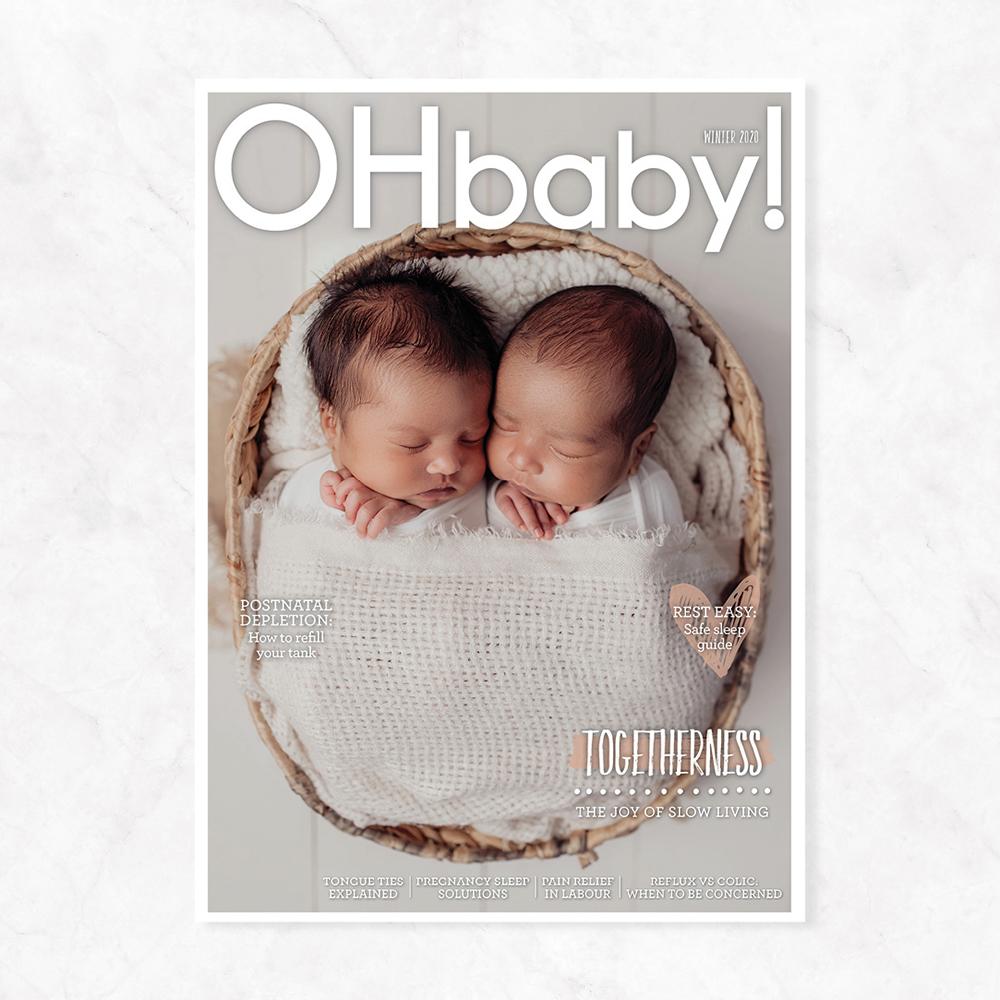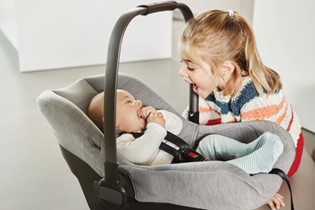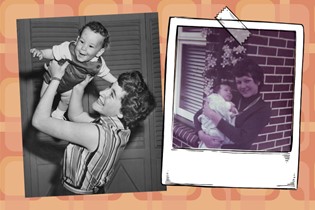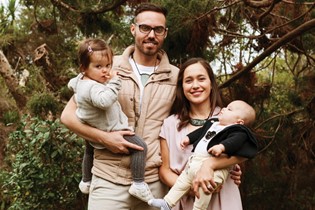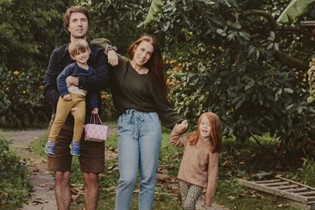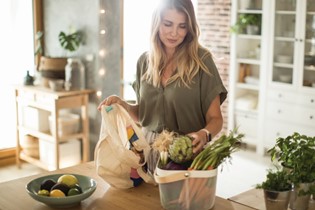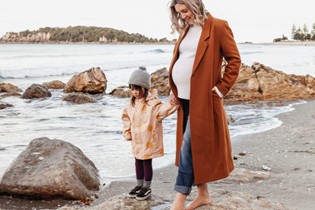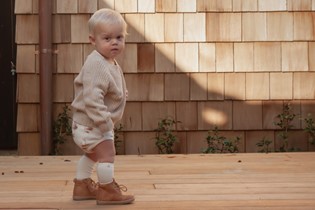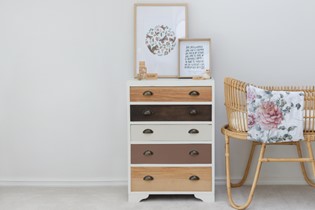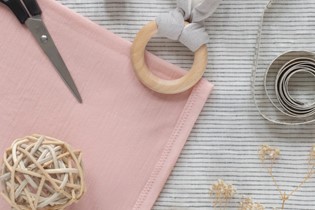The highs and lows of breastfeeding

TWO MUMS SHARE THE HIGHS, THE LOWS, THE UPS AND THE (LET) DOWNS OF THEIR BREASTFEEDING JOURNEYS.

TELL US ABOUT YOUR BREASTFEEDING JOURNEY
Following a Caesarean section, I spent a few days in hospital and then at Birthcare. I tried breastfeeding straight away but since my milk was taking a while to come in and Olivia had lost weight at the hospital, I had to pump every two hours in order to stimulate my breasts and produce more milk. The little milk I was able to express was cup-fed to Olivia. In addition to breastfeeding every two to three hours, the Birthcare midwife also suggested topping-up with formula during one or two feeds, rather than replacing an entire feed. I was then advised to continue exclusively breastfeeding at home.
By the fifth day, my nipples were completely destroyed – they were sore and bled a lot. I often had misshapen nipples (shaped like a lipstick) after feeding due to a shallow latch. I will never forget the first night we got home. I was in a great deal of pain but I breastfed through clenched teeth. I wanted to stop but could not as Olivia was hungry and cried each time I tried to remove her from my breasts. She was hungry but I was not providing enough milk for her. I felt powerless. I felt like I was letting her down. I cried as well.
After a very unsettling night with zero sleep and out of sheer desperation, my partner and I decided that we would give Olivia formula until I could bear breastfeeding again. I needed a respite for 24 hours.
This decision was very hard for me, as from the very beginning I’d been adamant that I wanted instead to exclusively breastfeed. We provided Olivia with formula top-ups from week two until my milk fully came in, so five weeks in total (with a maximum 80-100mg per day). Luckily, Olivia had no problem being breastfed and then drinking out of a bottle. We stopped giving Olivia formula altogether after our midwife and GP confirmed that she was a healthy weight. They recommended gradually decreasing the amount of formula during each feed until it wasn’t necessary to give it to her anymore. This worked very well and I am still exclusively breastfeeding.
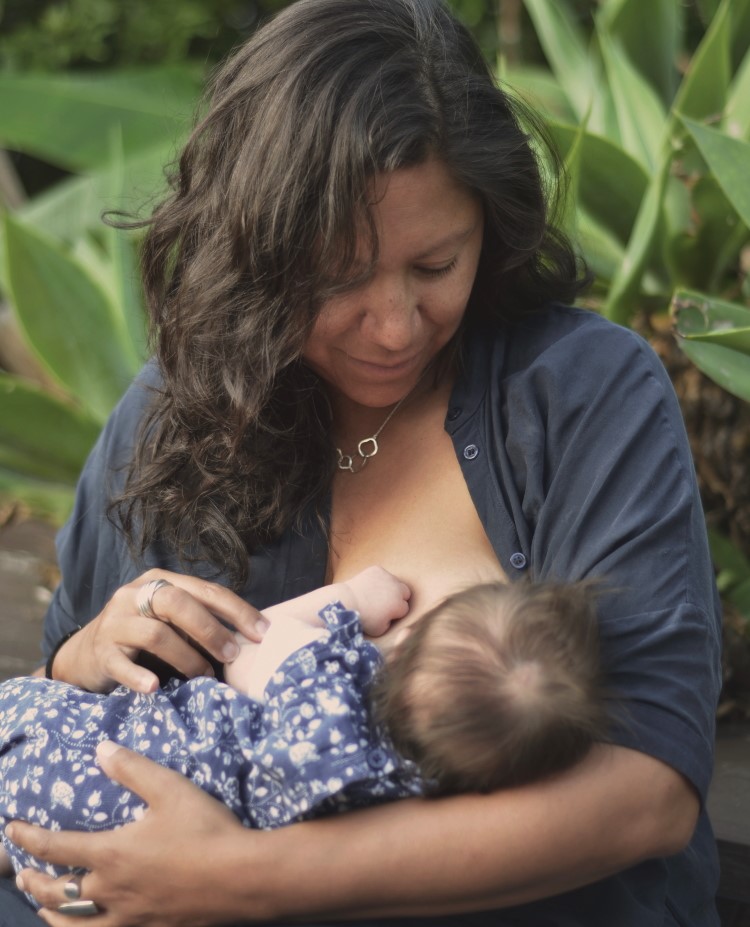
During my pregnancy, I’d read a lot about the birth journey but had given very little attention to breastfeeding, as I just assumed that my baby and I would naturally know what to do when the time came. I wasn’t really aware that it’s normal for a newborn to have trouble latching or maintaining sucking at the breast, and that your breasts will hurt a lot during the first few days.
My postnatal midwife came to visit us on the sixth day and gave me loads of advice, including using nipple shields to encourage a better latch, more effective sucking pattern and better milk intake during breastfeeding. I also applied freshly expressed breast milk onto my nipples to help with the healing process and applied lanolin ointment after each feed. I then covered my nipples with hydrogel pads, which provided instant cooling and soothing relief. And I used a natural shea butter balm which made a huge difference to the healing process.
I also got a double electric breast pump, which has been a life-saver. My partner and I had agreed from the beginning that he would help out with the feeding. That way I would get some rest and he could enjoy cuddling and feeding our baby too.
WHEN DID YOU FEEL COMFORTABLE BREASTFEEDING?
By week six I was breastfeeding on demand, I had stopped topping up with formula altogether, and I had enough milk for nursing and sufficient top-ups of expressed milk for my partner to help feed Olivia. The beginning was bumpy but we got there in the end and, as I said, I’m still exclusively breastfeeding.

WHAT SUPPORT OR ADVICE DID YOU FIND MOST HELPFUL WHILE LEARNING TO BREASTFEED?
✔ Use the shields, use the shields, use the shields!
✔ If you are topping up with formula, concentrate on supplementing one or two feeds, rather than replacing an entire feed as this will affect your milk supply in the longer term – your body will think that you need to produce less.
✔ Continue expressing milk so that your partner can offer support with the feeds, allowing you to sleep, shower, etc.
✔ Some feeds will last longer than others. Your baby may need time to get going at the breast for some feeds.
✔ Massage your breast towards the nipple to send milk into the baby’s mouth when she is nursing. This is also helpful when she begins to fall asleep at the breast too soon.
✔ Also, seek support straight away! I joined a mothers’ support group run by Cathy McCormick – a midwife and lactation consultant at HolisticBaby. She provided breastfeeding support when I needed it most and offered a safe and caring space for mums to come together, talk about their journeys and focus on the positive. Thanks to this mothers’ support group I’ve not only been able to nurse Olivia, but also stay in touch with other mums and feel less isolated.
WHAT ARE YOUR TOP TOOLS OF THE TRADE?
✔ Nipple shields
✔ Lulu Nilotica Shea butter
✔ Lanolin cream
✔ Double electric portable breast pump
✔ Breastfeeding tea
✔ Brewer’s yeast tablets (a nutritious dietary supplement to help boost milk supply).

MAITE'S TIPS FOR MUMS LEARNING TO BREASTFEED
Trust your body. It’s normal to get frustrated and think your baby will never learn to breastfeed effectively. This is especially true when your baby is tired or during a growth spurt, but don’t give up! It gets better with the right support and with time. Stay positive. Seek support from a lactation consultant and talk to other mums. Share the burden but remember not to compare yourself to others, as all babies are different.
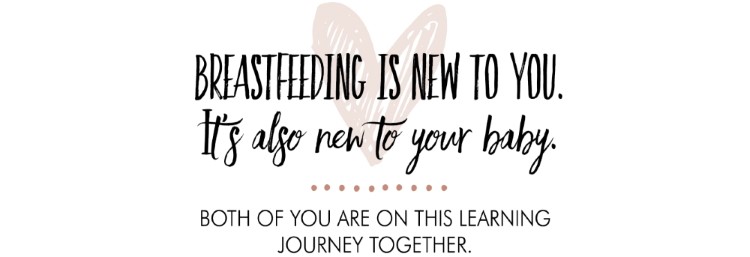

TELL US ABOUT YOUR BREASTFEEDING JOURNEY
It’s been tough. My milk took longer than I expected to come in and when it did, it wasn’t free-flowing like I’d imagined it would be. I’d been waiting for that ‘Pamela Anderson’ moment which didn’t arrive. I also wasn’t prepared for the emotional roller coaster that came with my milk coming in. I spent days three and four after giving birth in tears. I wasn’t unhappy – far from it – I just couldn’t stop the tears. I’ve since learnt it’s all part of the journey, and you just have to roll with it, shower cries and all! It took me another week to master the latch and find the best feeding position, and to do that was a huge relief.

Despite being told that a good latch shouldn’t hurt your nipple, I found the first two weeks of breastfeeding painful. My nipples were blistered and, at times, bleeding. Over the course of those two weeks, things did become easier. I found taking a hot shower (although painful at times) helped increase my milk supply, and was also a great way for me to unwind and have time to myself. For someone so small, Willow had a really strong latch! I remember putting my finger in her mouth to soothe her and the suction was phenomenal! At that moment I understood why breastfeeding was so painful.
Willow was fairly small at birth and dropped more weight than expected post-birth, so that, combined with my milk taking five days to come in, meant we supplemented with formula to ensure Willow was being adequately fed. I initially felt guilty for giving her formula because it had been ingrained in me that ‘breast is best’. I felt that I was somehow failing but a fed baby is a happy baby, right? I’m grateful for our home midwife who helped assess the breast milk situation, and gave us the confidence and comfort to use formula.

WHEN DID YOU FEEL COMFORTABLE BREASTFEEDING?
It takes a while for your breasts to become accustomed to their new job, and I’m glad I persevered and hung in there. All things going to plan I intend to breastfeed for 12 months. I have so much more respect for my body these days. I had a moment after around two weeks when I thought ‘We’ve got this’. My milk supply had increased, we had mastered a feeding position that worked for us both, and her latch seemed to have been getting stronger by the day. The time it was taking to feed also decreased – all of a sudden Willow became more efficient at feeding. I still questioned whether she was getting enough milk though and that’s a tough part of breastfeeding – you can’t be sure how much breast milk your child is getting. I did find comfort in the fact that Willow seemed content after a feed.
WHAT SUPPORT OR ADVICE DID YOU FIND MOST HELPFUL WHILE LEARNING TO BREASTFEED?
I’m extremely fortunate to have many mum friends around me – I found talking to friends about my breastfeeding experience,
and hearing all about their experiences, to be invaluable. I also think it’s important to take a moment to be kind to ourselves. It’s very easy to compare yourself with others but it’s important to remember that every mother’s journey is different.
WHAT ARE YOUR TOP TOOLS OF THE TRADE?
✔ Invest in a decent electric breast pump, it helps with your milk supply and saves time.
✔ Weleda Nipple Care Cream and Hydrogel Breast Discs were absolute lifesavers.
✔ Drinking lots of water is essential – I have three litres a day!
✔ My husband has been an amazing support, giving Willow the bottle in the evening for her dream feed, which means I get a solid few hours’ sleep.
✔ Lactation cookies and tea helped boost my milk supply, along with hot showers.
✔ I also have snacks at the ready for those days where you’re on the couch feeding for what seems like hours and hours.
JAYDE'S TIPS FOR MUMS LEARNING TO BREASTFEED
Don’t be disheartened if breastfeeding doesn’t fall into place at once, it will become more natural and get easier in time. You and your baby are both learning this new skill so be patient and kind to yourself.
Top image: twenty20.com @crystalmariesing

AS FEATURED IN ISSUE 50 OF OHbaby! MAGAZINE. CHECK OUT OTHER ARTICLES IN THIS ISSUE BELOW
